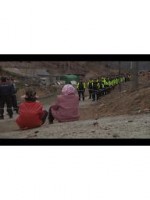130, Suyeonggangbyeon-daero,
Haeundae-gu, Busan, Republic of Korea,
48058
DATABASE
Milyang, a Welcome Guest (2014)
< Mil-yang, Ban-ga-un Son-nim >
The film’s perspective gradually shifts from that of an outsider observing the struggle in Milyang to what the local residents witness as they face the life problem regarding the construction of high-voltage transmission cable towers. In the process, we are led to re-examine the meaning of Milyang’s struggle, tainted with prejudice and misunderstandings. In Gol-an Village, transmission towers are nearly finished, and in Yong-hoe Village the construction has just begun whi...more
| Genre | Documentary | Production Status | |
|---|---|---|---|
| Running Time | 96min | Release Date | - |
| Country | South Korea | Rating | |
| Language | Korean | Co-Production | N |
| Original |
-
Number of Screens : 1
-
Total Admissions : 248
-
Total Gross : $874
As of Jan 01, 2026
-
Cinema DAL | cinemadal@cinemadal.com
- Republication, copying or redistribution by any means is prohibited without the prior permission of KOFIC and the original news source.











